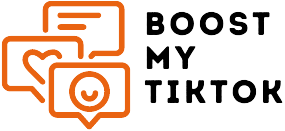Have you ever pondered the intricate web of influence that trends cast upon our lives? From the runways of Paris to the latest tech gadgets, trends have a remarkable power to shape our choices and behaviors.
But have you considered the deeper implications these trends hold beyond just being in vogue? Stay tuned to uncover compelling examples and insightful analyses that shed light on the pervasive force trends wield across various aspects of our lives, offering a glimpse into the complex interplay between society and the ever-evolving landscape of trends.
Impact of fashion trends
Fashion trends exert a powerful influence on consumer choices and societal norms. When you walk into a store or browse online, you’re bombarded with the latest styles and must-haves. These trends shape your preferences, pushing you to update your wardrobe to stay current. The impact goes beyond just clothing; it extends to beauty standards and even influences how you present yourself in daily life.
As you follow fashion trends, you become part of a larger cultural movement. The clothes you choose reflect not only your personal taste but also your desire to fit in or stand out. Brands capitalize on these trends, creating a cycle where consumer demand drives the industry to produce more of what’s deemed fashionable at the moment.
Moreover, fashion trends can dictate societal norms and values. They can challenge traditional beliefs, promote inclusivity, or spark important conversations about cultural appropriation. By participating in these trends, you contribute to shaping the collective mindset of society. So, next time you slip into a trendy outfit, remember the impact goes beyond just looking stylish.
Influence of technology trends
Embracing the advancements in technology trends can revolutionize the way you interact with the world around you. From the convenience of smart home devices to the efficiency of artificial intelligence, technology is shaping how we live and work.
The Internet of Things (IoT) connects everyday objects to the internet, allowing for seamless communication between devices and improved automation in homes and industries. Wearable technology like smartwatches and fitness trackers enables you to monitor your health and stay connected on the go.
Artificial intelligence (AI) is another prominent trend that’s enhancing various aspects of life, from personalized recommendations on streaming platforms to optimizing supply chains in businesses. Virtual and augmented reality technologies are changing the way we experience entertainment, education, and even shopping by immersing you in interactive digital environments.
Moreover, advancements in cybersecurity technologies are crucial in safeguarding your digital presence against evolving threats. Understanding and leveraging these technology trends can empower you to lead a more connected, efficient, and secure lifestyle in today’s digital age.
Trends in consumer behavior
Understanding the evolving patterns of consumer behavior can provide valuable insights for businesses seeking to adapt and thrive in dynamic markets. Consumer behavior is constantly changing, influenced by various factors such as societal trends, economic conditions, and technological advancements. To stay ahead of the curve, it’s crucial to keep a pulse on these shifting behaviors.
Here are five key points to consider:
- Personalization: Consumers increasingly seek personalized experiences and products tailored to their specific needs and preferences.
- Sustainability: There’s a growing emphasis on environmentally friendly and sustainable products, with consumers favoring brands that demonstrate a commitment to eco-conscious practices.
- Omnichannel shopping: The line between online and offline shopping continues to blur, with consumers expecting a seamless shopping experience across multiple channels.
- Social media influence: Social media platforms play a significant role in shaping consumer opinions and purchasing decisions, making it essential for businesses to have a strong online presence.
- Experience over products: Consumers are placing more value on experiences rather than material possessions, leading to a rise in demand for experiential marketing strategies.
Cultural trends and society
In the ever-changing landscape of cultural trends and society, it’s vital to recognize the impact these shifts have on consumer behavior and market dynamics. Cultural trends are constantly evolving, shaping the way individuals interact, consume, and make purchasing decisions. From the rise of social media influencers to the growing importance of sustainability, cultural trends influence not just what people buy but also why they buy it.
Society plays a crucial role in driving these cultural trends. Shifts in societal values, beliefs, and norms directly impact consumer preferences and brand perceptions. For example, the increasing focus on mental health has led to a rise in demand for products and services that promote well-being and self-care. Understanding these cultural shifts allows businesses to adapt their strategies and offerings to better resonate with consumers.
Future trends and predictions
Anticipate upcoming shifts in consumer behavior and market dynamics with a keen eye on future trends and predictions. As you navigate the ever-evolving landscape of trends, staying ahead of the curve is essential for success. Here are five key areas to focus on:
- Technology Integration: Keep an eye on how technology continues to shape industries and consumer interactions. From AI-driven solutions to virtual reality experiences, understanding tech trends is crucial.
- Sustainability and Ethical Practices: Consumers are increasingly drawn to eco-friendly and socially responsible brands. Embrace sustainability in your offerings and operations to align with this growing trend.
- Personalized Experiences: Tailoring products and services to individual preferences is becoming the norm. Utilize data analytics and customization strategies to enhance customer experiences.
- Remote Work Culture: The shift towards remote work is here to stay. Explore opportunities in providing remote-friendly solutions and flexible work arrangements.
- Health and Wellness Focus: Wellness trends are on the rise, with consumers prioritizing physical and mental well-being. Consider how your offerings can support this health-conscious mindset.
Conclusion
You’ve seen how trends can shape industries, influence behaviors, and reflect societal values. But you might be thinking, ‘Are trends really that important?’ Well, consider this: trends have the power to drive innovation, create opportunities, and bring people together in unexpected ways.
So next time you dismiss a trend as just a passing fad, remember that trends can be a powerful force for change and progress in our ever-evolving world.









